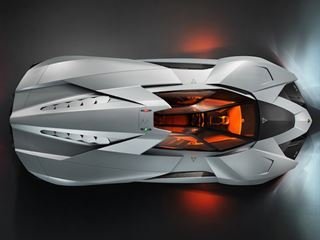You expect to see single-seaters on the racetrack, but not so much on the open road. After all, what's the point in driving a high-performance automobile if you can't take a friend along for the ride? While it may be uncommon, there have been a handful of supercars built for the road that place the driver right on the center line, in tune with the car's pitch and roll, and unencumbered by an extra seat next to the driver. The result is some of the most pilot-centric driving machines ever devised. Here are five of our favorites.
The most obvious example is the BAC Mono. Produced by the Briggs Automotive Company in the UK, the Mono is built around a steel frame chassis with carbon-composite body panels. It's powered by a 2.3-liter four-cylinder from Cosworth, which may produce only 285 horsepower, but with such a lightweight package and a Formula Three-derived six-speed sequential gearbox, the BAC Mono is quoted to run 0-100 km/h in just 2.8 seconds and top out at 273 km/h. Stopping power is provided by AP Racing brakes, and the entire package is built around the customer to ensure a tailor-fit track car that can also be driven on public streets.


Ford had a similar idea last year, but instead of developing a road car to resemble a race car, it adapted a race car for the road. The company's European team took a Formula Ford racer and modified it to barely meet regulations for street-drivability. The 180-horsepower 1.6-liter four was swapped out for a 205hp 1.0-liter turbocharged inline-three from Ford's EcoBoost range to give it a sub-four-second 0-100 time and enable it to lap the Nurburgring Nordschleife in 7:22, faster than most supercars. Following its release in September, there were rumors that Ford could produce a limited quantity of these turbocharged road racers, but we haven't heard much about it since then.


Even more impressive is what Lamborghini had in store at the end of its Grande Giro anniversary tour. That's where the Bolognese automaker unveiled the Egoista concept as a 50th birthday present to itself. While previous Lamborghini production and concept cars drew their inspiration from fighter jets, the Egoista takes the recipe even further with a single-seat cockpit encased in a canopy roof surrounding the driver. Powered by the Gallardo's 5.2-liter V10 upgraded to 600 horsepower for the driver to enjoy by himself, the Egoista is as selfish as its name implies, and is unfortunately destined to remain a one-off concept, never to see production.


Aside from its speed, what made the McLaren F1 stand out was its seating arrangement. Instead of two seats in tandem, the F1 placed the driver in the middle, with two outboard seats placed on either side and further back. However those few imported by Ameritech to the US had to ditch the supplementary seats because they weren't fitted with airbags. The more extreme race-spec F1 GTR was also stripped of its extra seats, and while some of them were converted back to road use, not all were retrofitted with the extra seating capacity. Either way, the BMW-sourced, 618hp 6.1-liter V12 propelled the advanced carbon monocoque chassis to 100 in 3.2 seconds and top out at 371 km/h.


Some of the engineers responsible for the McLaren F1 went on to develop the SLR for Mercedes, some left with Gordon Murray to work on a city car, and some partnered form Freestream. That outfit, later bought by Caparo, produced the T1. Now here we have to admit we're cheating a little, because the Caparo T1 was technically a two-seater, but that second seat was something of an after-thought. The T1 was about as close as you could ever get to a Formula One car for the road, with a high-revving 3.5-liter V8 producing 575 horsepower to send it from 0-100 in under 2.5 seconds and on to 329 km/h. Unfortunately it was so unusable that few were built.


Related News



